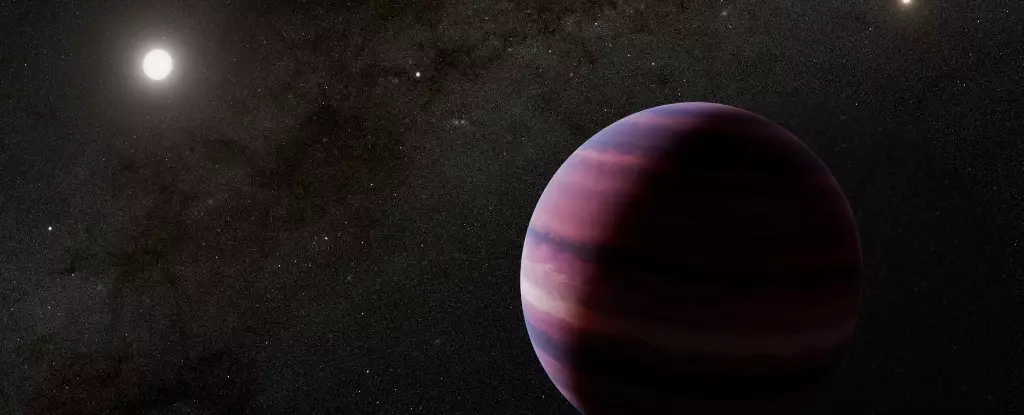The prospect of discovering a potentially habitable world in our cosmic backyard ignites both curiosity and skepticism. The Alpha Centauri system, just four light-years away, has long been a tantalizing target for astronomers aiming to find Earth-like planets outside our solar system. Recent advancements, notably the James Webb Space Telescope (JWST), have provided glimpses into this nearby stellar neighborhood, hinting at the existence of an exoplanet that might redefine our understanding of planetary habitability. While initial findings suggest a world within the habitable zone of Alpha Centauri A, the journey from tentative detection to confirmed discovery is fraught with scientific challenges and philosophical implications.
The Alpha Centauri system’s complex architecture—with a close binary pair and a distant red dwarf—presents a formidable obstacle for astronomers seeking to identify new worlds. Historically, detecting planets around stars this bright and dynamic has been nearly impossible with conventional techniques. However, JWST’s advanced imaging capabilities, especially its coronagraphs, have started to cut through the glare. The hints of a planet, tentatively called Alpha Centauri Ab, emerged during observations aiming to capture direct images of planets in the system—an achievement in itself given the technical hurdles. Its potential location, about twice Earth’s distance from our Sun, places it squarely in the zone where liquid water could exist, a fundamental criterion for habitability.
Yet, as promising as these signs are, the orbiting world appears to have vanished in subsequent observations. This inconsistency underscores the inherent difficulties of direct imaging in such a luminous and chaotic environment, raising questions about whether the planet is elusive, transient, or perhaps an observational illusion. Such variability might result from the planet’s orbital path, the brightness of the parent star, or even limitations in current imaging technology. Indeed, scientists had previously detected signals suggestive of a planet around Alpha Centauri A, but confirming such a discovery remains some way off, emphasizing how nascent and experimental the field of direct exoplanet imaging still is.
The Enigma of a Gas Giant in the Habitable Zone
If Alpha Centauri Ab exists as the models suggest—a gas giant roughly the size of Saturn—then the potential habitability debate becomes far more complex. Gas giants themselves are unlikely candidates for life as we understand it, due to their hostile atmospheres and crushing pressures. However, they are often surrounded by moons—dwarf worlds that could have the right conditions for life. In our own solar system, moons like Europa and Enceladus have become prime candidates for extraterrestrial life within the habitable zones of their parent planets.
This raises a provocative question: could the moons orbiting Alpha Centauri Ab be habitable? If so, it might not be the planet itself that is suited for life but its satellite systems, which could harbor subsurface oceans or other favorable environments. The possibility opens up a new frontier in the search for life beyond Earth—one where interest shifts from worlds to systems of worlds, where habitability might be rooted not in the planet’s surface but in its potential moons.
Furthermore, the presence of a large gas giant in the habitable zone would challenge existing models of planetary formation. How could such a world form in a binary star system marked by gravitational chaos? Would it have migrated inward after forming elsewhere, or could it have coalesced in an environment considered hostile to giant planets? These questions strike at the core of planetary science and demand more than just observational evidence—they require a fundamental reevaluation of planetary dynamics, especially in multi-star systems that are more common than previously thought.
Beyond Confirmation: The Future of Exoplanet Exploration
The tentative nature of these findings does not diminish their importance; rather, it highlights the need for relentless scientific rigor and technological advancement. Imagine the implications if future observations confirm Alpha Centauri Ab as a gas giant in the habitable zone. Not only would it be the closest directly imaged exoplanet—and thus the most accessible target for detailed study—but it would also serve as a natural laboratory to understand planetary formation in complex stellar systems. It could redefine the parameters for habitability, especially considering moons and their potential to harbor life, rather than the planet alone.
The challenge now lies in refining observational techniques, improving sensitivity, and developing new models to interpret fleeting signals amid stellar noise. The possibility of a “disappearing” planet underscores the current limitations of our technology and understanding. Yet, it also exemplifies the scientific process—an iterative pursuit of truth driven by curiosity, persistence, and skepticism.
Looking ahead, missions that can provide longer, more precise observations will be crucial. Ground-based telescopes with adaptive optics, next-generation space telescopes, and even specialized missions designed to study exoplanetary moons could all play vital roles. If the findings around Alpha Centauri hold true, they will not only revolutionize our understanding of nearby planetary systems but could also influence the search for life across the galaxy. In a universe filled with billions of stars, the close proximity of Alpha Centauri makes it our most promising gateway to answering one of humanity’s most profound questions: Are we alone?


Leave a Reply